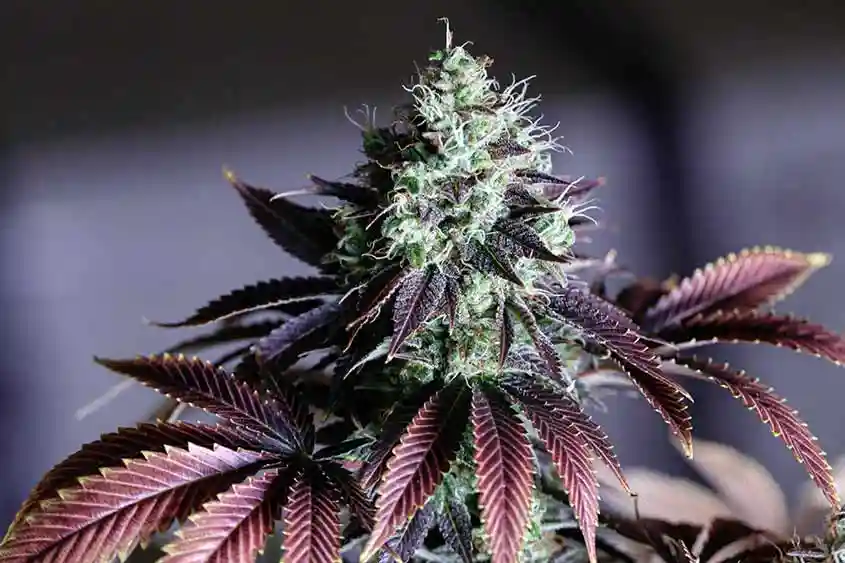If you’ve been reading about cannabis over the past few years, you may have come across the rising popularity of terpenes. These naturally occurring compounds have captured the attention of researchers, medical professionals, and cannabis enthusiasts alike. With their ability to influence the aroma, flavor, and even the therapeutic properties of cannabis, terpenes are increasingly being recognized as a crucial element in understanding how cannabis works. Also, this growing interest is not merely a trend. On the contrary, it is a reflection of the expanding body of research that underscores the significant role terpenes play in the overall cannabis experience. As our knowledge of cannabis deepens, it becomes clear that terpenes are essential to both the plant’s recreational and medicinal uses.
This blog will help you understand what terpenes are and their reported benefits, especially for medical marijuana patients. Also, by exploring the diverse world of terpenes, we aim to shed light on how these compounds contribute to the efficacy of medical marijuana. For patients seeking relief from a variety of symptoms, understanding terpenes can be the key to choosing the right strain and optimizing their treatment. All in all, this blog provides a comprehensive overview of their importance and how they can enhance the therapeutic potential of cannabis.
Understanding Terpenes

What Are Terpenes?
Terpenes are a diverse class of organic compounds found in cannabis and nearly all other plants. Also, these compounds are responsible for the distinctive aromas, flavors, and even colors of various plants, contributing to their unique identities. In cannabis, terpenes are produced in the same glands that produce cannabinoids like THC and CBD. Finally, these aromatic compounds are not only crucial for the sensory experience of cannabis but also play a significant role in its medicinal properties.
The Role of Terpenes in Plants
In the plant kingdom, terpenes serve several critical functions. They act as a defense mechanism against herbivores, insects, and other environmental threats. For example, some terpenes have strong odors that repel pests, while others attract pollinators, aiding in the reproductive process of the plants. Also, beyond their ecological roles, terpenes have therapeutic properties that have been utilized in traditional medicine for centuries.
Terpenes and Aromatherapy
The use of terpenes extends beyond the realm of cannabis. These compounds are fundamental to aromatherapy, a holistic healing treatment that uses natural plant extracts to promote health and well-being. Also, essential oils, which are rich in terpenes, are commonly used in aromatherapy to treat a range of physical and emotional conditions. This ancient practice highlights the therapeutic potential of terpenes and their ability to interact with the human body in meaningful ways.
The Entourage Effect
One of the most intriguing aspects of terpenes is their role in the entourage effect. This concept refers to the synergistic interaction between various compounds in cannabis, including cannabinoids (like THC and CBD) and terpenes. The entourage effect suggests that these compounds work better together than in isolation, enhancing the overall therapeutic benefits of cannabis. For instance, while THC is known for its psychoactive effects, the presence of certain terpenes can modulate this effect, potentially reducing anxiety or amplifying pain relief.
Terpenes in Cannabis
In the context of cannabis, terpenes have garnered significant attention for their potential therapeutic effects. Also, different strains of cannabis have distinct terpene profiles, which contribute to their unique effects and benefits. For example, a strain with a high concentration of myrcene might be more sedative and effective for pain relief, while a strain rich in limonene may be uplifting and help alleviate stress
Research and Potential
The scientific community is increasingly focusing on the study of terpenes to understand their full potential. As a result, preliminary research suggests that terpenes may have a wide range of medical benefits, including anti-inflammatory, anti-bacterial, and anti-anxiety properties. However, more research is needed to fully understand how each terpene works and how they can be effectively used in medical treatments.
Understanding terpenes is essential for anyone interested in the therapeutic uses of cannabis. These compounds not only define the sensory experience of cannabis but also play a crucial role in its medicinal properties. So, by exploring the diverse world of terpenes, we can gain a deeper appreciation for the complexity of cannabis and its potential as a powerful therapeutic tool. As research continues, the role of terpenes in medical marijuana will likely become even more significant, offering new insights and possibilities for treatment.
The Medical Significance of Terpenes

Historical Context and Modern Research
Despite marijuana’s long history of use, there remains significant ambiguity regarding its safety and effectiveness as a medicine. For centuries, various cultures have harnessed the healing properties of plants, often without fully understanding the specific compounds responsible for these effects. However, it cannot be denied that Terpenes, naturally occurring in essential oils, have played a crucial role in traditional herbal remedies. All in all, these practices have laid the foundation for our current understanding of terpenes and their potential medicinal benefits.
In modern times, scientific research has begun to dissect the roles of individual terpenes in therapeutic contexts. This research aims to uncover how terpenes interact with the human body and influence various disease states. However, the complex nature of these interactions means that extensive studies are still required to fully comprehend their mechanisms and potential applications.
Medicinal Properties of Terpenes
Centuries of herbal medicine have helped identify and understand the medical effects of terpenes. Traditionally, herbal remedies have utilized the naturally occurring terpenes in plants’ essential oils to treat various symptoms and conditions. Today, research has begun to uncover the specific effects of these compounds. However, more studies are needed to fully understand how each terpene interacts with the human body and various diseases.
Anti-Inflammatory Properties
Many terpenes exhibit strong anti-inflammatory properties. For example, myrcene and caryophyllene are known for their ability to reduce inflammation, which is beneficial for conditions such as arthritis, inflammatory bowel disease, and chronic pain. By targeting the body’s inflammatory pathways, these terpenes can help alleviate symptoms. All in all, they improve quality of life for patients suffering from inflammatory conditions.
Analgesic (Pain-Relief) Effects
Pain relief is one of the most sought-after benefits of medical marijuana, and terpenes play a significant role in this area. Terpenes such as myrcene and linalool have been shown to possess analgesic properties. These compounds can enhance the pain-relieving effects of cannabinoids, providing more comprehensive relief for patients dealing with chronic pain, neuropathy, or post-surgical pain.
Anti-Anxiety and Sedative Effects
Terpenes like linalool and myrcene also offer potential benefits for patients dealing with anxiety and sleep disorders. Linalool, found in lavender, has well-documented calming and sedative effects, making it useful for reducing anxiety and improving sleep quality. Myrcene, often present in high concentrations in indica strains of cannabis, is known for its relaxing and sedative properties, which can help individuals suffering from insomnia.
Anti-Microbial and Anti-Bacterial Properties
Some terpenes have potent anti-microbial and anti-bacterial properties. For instance, terpenes like pinene and linalool can inhibit the growth of bacteria and fungi, which may be beneficial in treating infections and supporting overall immune health. Also, these properties make terpenes valuable in the development of new antibiotics and antifungal medications.
Enhancing the Therapeutic Effects of Cannabinoids
One of the most exciting aspects of terpenes is their ability to enhance the therapeutic effects of cannabinoids through the entourage effect. As a result, this synergy between terpenes and cannabinoids can amplify the benefits of medical marijuana. Entourage makes terpenes more effective in treating a wide range of conditions. For example, pinene can improve cognitive function and counteract some of the short-term memory deficits caused by THC. On the other hand, caryophyllene’s interaction with the CB2 receptor can enhance its anti-inflammatory effects.
Key Terpenes and Their Benefits

Cannabis contains a vast array of terpenes, each with unique properties and potential health benefits. Here are some of the main terpenes found in cannabis and their reported medicinal benefits:
1. Myrcene
Medicinal Benefits:
- Sedative: Myrcene is known for its calming effects, which can help those struggling with anxiety or insomnia.
- Insomnia Relief: Due to its sedative properties, myrcene can be effective in aiding sleep and combating insomnia.
- Anti-Inflammatory: Myrcene has been shown to reduce inflammation, making it beneficial for conditions like arthritis and chronic pain.
Potential Effects:
- Relaxation: Myrcene can induce a state of deep relaxation, often described as a “couch-lock” effect.
- Pain Relief: It is effective in alleviating pain, especially when combined with other cannabinoids.
2. Limonene
Medicinal Benefits:
- Gastroprotective: Limonene has been found to support gastrointestinal health by reducing acid reflux and protecting the stomach lining.
- Anti-depressant: Its uplifting effects can help alleviate symptoms of depression.
- Anti-fungal: Limonene possesses anti-fungal properties, making it useful in treating fungal infections.
Potential Effects:
- Mood Elevation: Limonene can elevate mood and promote a sense of well-being.
- Enhanced Focus: It is known to improve mental clarity and focus.
- Stress Relief: Limonene’s calming effects can help reduce stress and anxiety.
3. Linalool
Medicinal Benefits:
- Immune System Support: Linalool can boost the immune system, helping the body to fight off infections.
- Anti-microbial: It has anti-microbial properties, making it effective against bacteria and viruses.
- Anti-convulsive: Linalool can help in reducing the severity and frequency of seizures.
Potential Effects:
- Calming/Sedative: Linalool is known for its strong calming effects, which can aid in reducing stress and promoting sleep.
- Anxiety Relief: It can alleviate symptoms of anxiety and depression.
- Pain Relief: Linalool has been shown to have analgesic properties, providing pain relief.
4. Pinene
Medicinal Benefits:
- Improved Airflow to Lungs: Pinene can enhance respiratory function by dilating air passages.
- Anti-bacterial: Its anti-bacterial properties help in combating infections.
- Anti-inflammatory: Pinene is effective in reducing inflammation, which can help with conditions like asthma and arthritis.
Potential Effects:
- Focus: Pinene can improve concentration and alertness.
- Alertness: It promotes a state of heightened awareness, countering the sedative effects of some other cannabinoids.
- Reduced THC-related Memory Impairment: Pinene may help mitigate some of the short-term memory issues associated with THC.
5. Caryophyllene

Medicinal Benefits:
- Anti-inflammatory: Caryophyllene is known for its potent anti-inflammatory effects, making it beneficial for chronic pain conditions.
- Gastroprotective: It can protect the digestive tract and promote gastrointestinal health.
- Anti-depressant: Caryophyllene has potential anti-depressant effects, which can help alleviate mood disorders.
Potential Effects:
- Sedative: Caryophyllene can have calming effects, promoting relaxation and sleep.
- Pain Relief: It is effective in reducing pain, particularly when combined with other cannabinoids.
Reduced Anxiety:
- Caryophyllene can help alleviate anxiety symptoms.
6. Terpinolene
Medicinal Benefits:
- Insomnia Relief: Terpinolene has sedative properties that can help in treating insomnia.
- Antioxidant: It possesses antioxidant properties, which can help protect cells from damage.
- Anti-microbial: Terpinolene can inhibit the growth of bacteria and fungi.
Potential Effects:
- Sedative in Isolation: When used alone, terpinolene can have a sedative effect, promoting relaxation and sleep.
- Stimulating with THC: In combination with THC, terpinolene can produce a stimulating effect, enhancing mood and energy.
Anxiety Relief:
- Terpinolene can help reduce anxiety and stress.
Conclusion
Terpenes play a crucial role in the therapeutic potential of cannabis, offering a diverse range of benefits that extend beyond their aromatic contributions. By understanding the specific properties and effects of terpenes like myrcene, limonene, linalool, pinene, caryophyllene, and terpinolene, medical marijuana patients can better tailor their treatment to address their individual needs. These compounds have been shown to provide significant medicinal benefits, including anti-inflammatory, analgesic, anti-anxiety, and antimicrobial effects. Moreover, the synergy between terpenes and cannabinoids through the entourage effect enhances the overall efficacy of cannabis, making it a powerful tool in managing various health conditions.
Despite the progress in terpene research, much remains to be discovered about their full potential and mechanisms of action. As our understanding of these compounds deepens, it is likely that we will uncover even more therapeutic applications, further solidifying the importance of terpenes in medical cannabis. For patients and healthcare providers, staying informed about the latest developments in terpene science can lead to more effective and personalized treatment options. All in all, the future of medical marijuana looks promising, with terpenes playing a pivotal role in unlocking the plant’s full healing potential.
Consult a healthcare professional before using cannabis products; the advice provided is not a substitute for medical guidance.

